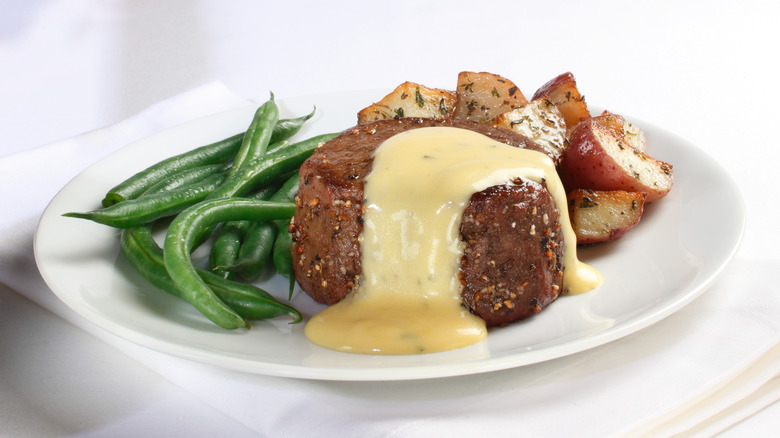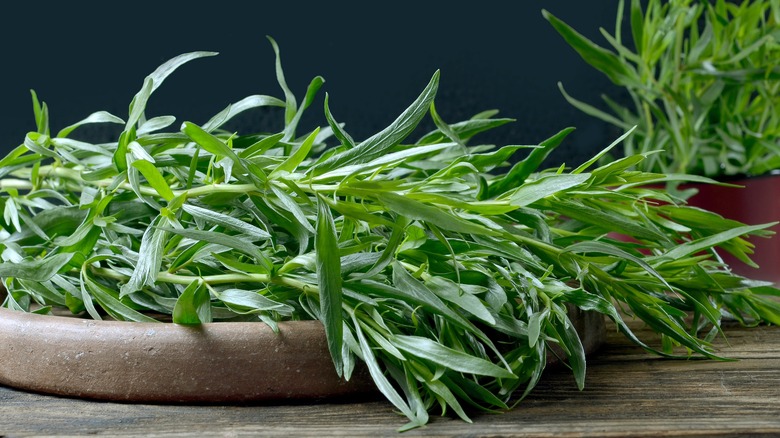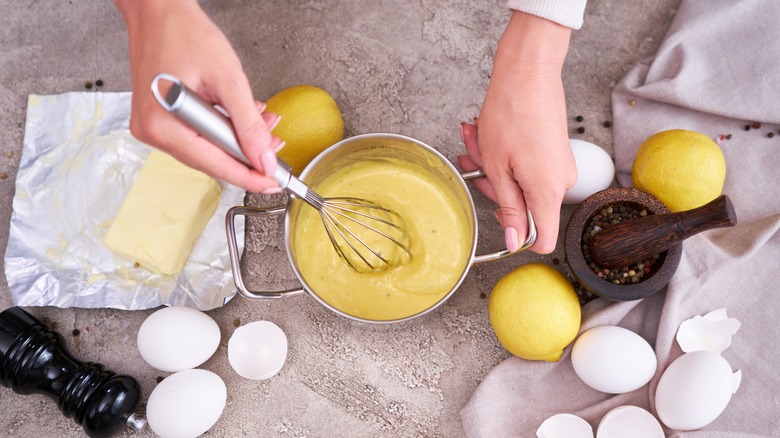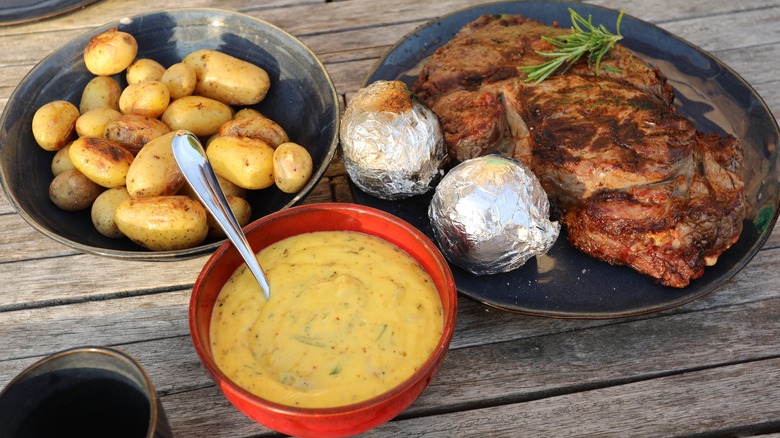Add Tomato Paste To Béarnaise For A Zesty, Versatile Sauce
Even a classic sauce like Béarnaise can stand for a little modification. Made with clarified butter and egg yolks, Béarnaise is traditionally served with grilled steak for a dreamy combination. It's a variation of hollandaise, which is considered to be one of the five French mother sauces.
With its rich history in French haute cuisine, Béarnaise sauce has been perfected through decades of cooking. However, it does require some skill to keep the clarified butter and egg yolks from separating. But once mastered, a Béarnaise sauce adds flavor to many dishes, especially some that go well with a tart sauce like chicken and fish.
To transform Béarnaise into another versatile sauce, simply add tomato paste which gives the sauce a little sweetness but still has its rich texture. Now called Choron sauce or Béarnaise tomatée, it is finished with some kosher salt and lemon juice.
The first person who is credited with adding tomato to Béarnaise was chef Alexandre Étienne Choron who worked in a high-end Parisian restaurant in the second half of the 1800s. However, his ability to create meals out of exotic animals is more well documented than why he created the sauce that now bears his name.
Classic French ingredients
A good Choron sauce starts with a good Béarnaise made with a classic French herb: tarragon. For this recipe, the fresh herb is much preferred over the dried for its flavor. Another common ingredient in French cooking, shallots, are finely minced and added to the recipe. In addition to the egg yolks and clarified butter, a third liquid is needed. White wine is most commonly added to Béarnaise, but tarragon vinegar and Champagne vinegar are two other options. To continue with the fresh components, lemon juice is also added to the sauce. Finally, a small amount of ground black pepper is used to instill a little more flavor.
To then transform the delicate Béarnaise sauce into Choron, add tomato paste for a little sweetness. Tomato purée can also be substituted for the paste if that is what is available, but whatever tomato product is used does need to be thick in consistency. If the sauce is a little too sweet after the addition of tomato, then a little more white wine vinegar can be added to taste.
How to make Choron sauce
A few tools are required to make Choron sauce, including a small saucepan, a measuring cup, a medium bowl, and a double boiler. Most recipes start with simmering the shallots, tarragon, and crushed peppercorns in white wine vinegar until it mostly evaporates in the saucepan, leaving about 2 tablespoons of liquid. The shallots should become tender and translucent. Then, pour the saucepan's contents into a medium bowl and add the egg yolks. They should be whisked together for a minute or two until it becomes an airy and foamy consistency.
At this point, the bowl should be placed on top of the saucepan which contains water that has been heated to the simmering point, creating a double boiler. Continue to whisk as it thickens, then remove from the heat and slowly add the clarified butter. Add the remaining tarragon, tomato paste, and lemon and salt to taste, and voilà, you have Choron sauce.
How to cook with Choron sauce
While Choron sauce can be made ahead of time, it is not recommended to make it too far in advance because of the raw eggs that could spoil. In addition, the sauce should be served warm. It is commonly drizzled over the meat but can be served in a small dish on the side.
Like Béarnaise, Choron sauce is a delicious addition to grilled steak. It also pairs well with eggs and proteins such as chicken and fish. Emeril Lagasse likes to pair Choron sauce with smoked trout hash and poached eggs. Other fish such as grilled sole also works well with the fresh-tasting sauce. For a vegetarian meal, consider drizzling the Choron sauce over potatoes or other vegetables such as roasted asparagus.
Next time you are making a steak, fish, or vegetables, consider whisking up some Choron sauce to transform that meal into a spectacular and tasty experience.



